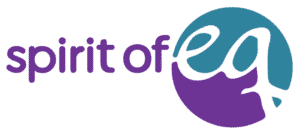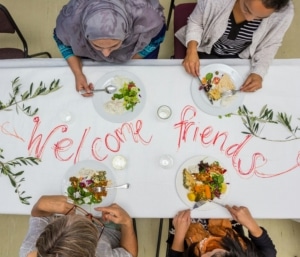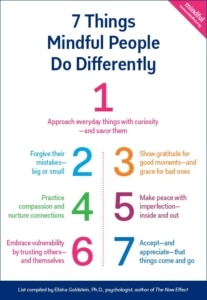Embracing Our Present Human Situation: Lessons from Wendell Berry
As I continue to write about the ideas I heard at the Richard Rohr Conference put on by the CAC, I continue to think and maybe even more about a world where the relentless march of progress often overshadows the quiet wisdom of simplicity, and in some of the words of Wendell Berry, one of my favorite authors, resonate with a profound urgency. Berry, a celebrated author, poet, and environmentalist, invites all of us to confront the reality of our existence with a refreshing perspective. He observes that “the glory of the human has become the desolation of the earth,” a stark reflection of how our achievements have come at a significant cost to the planet. As we stand at this crossroads, Berry challenges us to reconsider our relationship with the earth, urging us to foster a mutually enhancing connection that honors both humanity and nature.
There is a paradox of progress in a bustling city, filled with the sounds of honking cars, the glow of neon lights, and the constant hum of technology. It’s a place where convenience reigns supreme, yet beneath the surface lies a growing discontent. The relentless pursuit of progress has led to environmental degradation, loss of biodiversity, and a disconnection from the natural world. In our quest for advancement, we may have often overlooked the very foundation of our existence: the earth itself.
Berry’s assertion that “the desolation of the earth is becoming the desolation of the human” rings true in our modern lives. As we exploit the planet’s resources, we ultimately harm ourselves. The health of our planet is intricately linked to our own well-being. This interconnectedness calls for a profound shift in how we perceive our relationship with nature. Think about why we are starting to have outside church, wilderness camps for all ages, extreme sports that pit human with nature, etc.
A new judgment for human activities, Berry posits, is the primary judgment of all human activities that will be determined by the extent to which they foster a mutually enhancing human/earth relationship. This perspective challenges us to reconsider our values and priorities. Are our actions contributing to the health of the planet, or are they perpetuating its decline? Good question right?
This call to action is not merely an environmental plea; it is a moral imperative. We must evaluate our choices through the lens of sustainability and reciprocity. By fostering a relationship with the earth that is nurturing rather than exploitative, we can create a future that honors both humanity and the natural world. And Berry also says that this regardless of where you stand on this issue, look around, he says.
To understand our peasant human situation at its core, is a reminder of our roots. It speaks to the idea that, despite our advancements, we are still fundamentally connected to the land and to each other. Berry’s philosophy emphasizes the importance of simplicity, sustainability, and community. In a society that often prioritizes individualism and consumerism, Berry’s insights encourage us to reflect on our values and the impact of our choices.
In his writings, Berry often advocates a call for a simpler way of life. He suggests that by stripping away the excess, we can find clarity and purpose. This simplicity is not about deprivation; rather, it is about recognizing what truly matters. In a world filled with distractions, simplifying our lives can lead to greater fulfillment.
Consider the clutter of modern life: the endless notifications on our phones, the pressure to keep up with trends, and the overwhelming choices at every turn. By embracing simplicity, we can create space for what truly nourishes our souls. Can I be honest here? It IS becoming over whelming to KEEP up with everything for me, is it for you?
These tips come right out of “Your money or your life”
Declutter Your Space: Start by removing physical clutter from your home. A tidy environment can lead to a clearer mind. Donate items you no longer use, and create a space that reflects your values. You have all heard this before.
Limit Screen Time: Reduce the hours spent on devices. Instead, engage in activities that nourish your soul, such as reading, gardening, or spending time with loved ones. Set boundaries for technology use to reclaim your time and attention. This may be harder, but worth it.
Mindful Consumption: Be intentional about what you buy. Choose quality over quantity, and support local businesses that align with your values. This not only benefits your community but also fosters a sense of connection to the products you use.
Berry’s work often highlights the importance of our relationship with the natural world and reconnecting with nature. In an age of urbanization and digital distractions, it’s easy to forget our connection to the earth. However, nature has a way of grounding us and reminding us of our place in the larger ecosystem.
Imagine stepping outside into a sun-drenched garden, the scent of blooming flowers filling the air. The rustle of leaves in the breeze and the chirping of birds create a symphony of life that soothes the soul. This is the beauty of nature, and it is essential for our well-being.
Berry’s Ways to Reconnect with Nature:
Spend Time Outdoors: Whether it’s a walk in the park, a hike in the woods, or simply sitting in your backyard, make it a priority to spend time outside. Allow yourself to be present in the moment, soaking in the sights and sounds of the natural world.
Start a Garden: Gardening is a powerful way to connect with the earth. It teaches patience, responsibility, and the joy of nurturing life. Even a small herb garden on your windowsill can provide a sense of accomplishment and connection to nature.
Practice Mindfulness in Nature: When you’re outside, take a moment to truly observe your surroundings. Listen to the sounds, feel the textures, and appreciate the beauty of the natural world. Mindfulness can enhance your experience and deepen your appreciation for the environment.
Berry emphasizes the importance of community in his writings. In a world that often promotes isolation, fostering connections with others can provide support, joy, and a sense of belonging.
Picture a neighborhood gathering, where laughter fills the air, and people come together to share stories, food, and experiences. This sense of community is vital for our well-being and can help us navigate the challenges of modern life.
Berry’s call to meet “all the reality we can bear” is a powerful reminder to confront the challenges of our time with courage and resilience. It encourages us to acknowledge the complexities of life while finding ways to navigate them with grace.
In a world filled with uncertainty, it’s easy to feel overwhelmed. However, by focusing on what we can control and taking small, meaningful steps, we can create a positive impact.
Start by practicing gratitude: Regularly reflect on the things you are grateful for. This practice can shift your perspective and help you focus on the positive aspects of life. Consider keeping a gratitude journal to document your reflections.
Limit negative news consumption: while it’s important to stay informed, excessive exposure to negative news can be overwhelming. Use your news sources yes and take breaks when needed. Balance is key to maintaining your mental well-being.
Engage in meaningful conversations: by discussing your thoughts and feelings with trusted friends or family you reap clarity and support. It’s essential to share your burdens and seek advice when needed. Building a support network can help you navigate life’s challenges.
Wendell Berry’s writings serve as a beacon of hope and wisdom in a chaotic world. His ability to articulate the human experience in relation to nature and community inspires us to reflect on our own lives. By engaging with literature, we can gain new perspectives and insights that encourage us to live more intentionally.
Imagine curling up with a good book, I love doing this reading the pages filled with stories that challenge your thinking and inspire you to reflect on your values. Literature has the power to transport us, to teach us, and to connect us with the experiences of others.
Wendell Berry’s philosophy invites us to embrace our peasant human situation with open hearts and minds. By simplifying our lives, reconnecting with nature, building community, and facing reality with courage, we can navigate the complexities of modern existence.
Let us take inspiration from Berry’s words and strive to live more intentionally, ensuring that the desolation of the earth does not become the desolation of the human spirit. Together, we can cultivate a future that honors both our humanity and the natural world, creating a legacy of hope and resilience for generations to come. By embracing these principles, we not only enrich our own lives but also contribute to a more sustainable and harmonious world.




